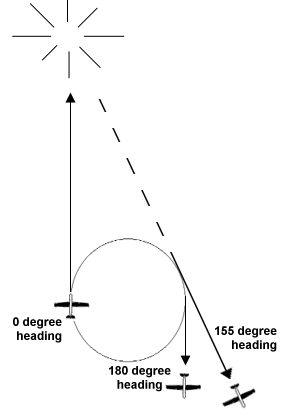
One plane. One bomb. One drop. Then, get out of there as fast as you can. It sounds simple, but in August of 1945 there was a lot more to it than that.
The two single-bomb attacks on Hiroshima and Nagasaki were the culmination of billions of dollars and years of extraordinary effort, breaking the limits of known science and changing our world forever. But because of the extraordinary nature of the bomb, even simple acts had to be orchestrated with precision. Even simple acts like the departure.
The overriding goal of the departure maneuver was to get as far away as possible from the nuclear explosion. If you want to leave in a hurry, you would either leave in any direction or turn tail 180 degrees and head back home.
But, why would Enola Gay and Bockscar leave the target site at a 155 degree angle?
The answer comes from geometry and a basic knowledge of flight, with a focus on the turning radius of a B-29 aircraft.
First, the dropped bomb had forward velocity. This meant that it would land several miles ahead of the drop point. This also meant that if the aircraft kept flying in the same direction it would be very close to the bomb blast. The aircraft had to turn away from the bomb in order to get as far away from it as possible.
Second, the B-29 is a big aircraft, and it needs a lot of space to make a turn. Even a tight turn can have a radius of a few miles.
Although it would normally make sense to turn 180 degrees, the wide turning radius changed the geometry of the scene. Thus, by the time the aircraft had straighted out at 180 degrees, it would not have had its tail to the bomb; the bomb would have been aft and to the side!
The bomb target was directly behind the aircraft when the aircraft had turned only 155 degrees. This meant that the aircraft was able to straighten out from a turn earlier, accelerate sooner, and still head straight away from the nuclear explosion.
